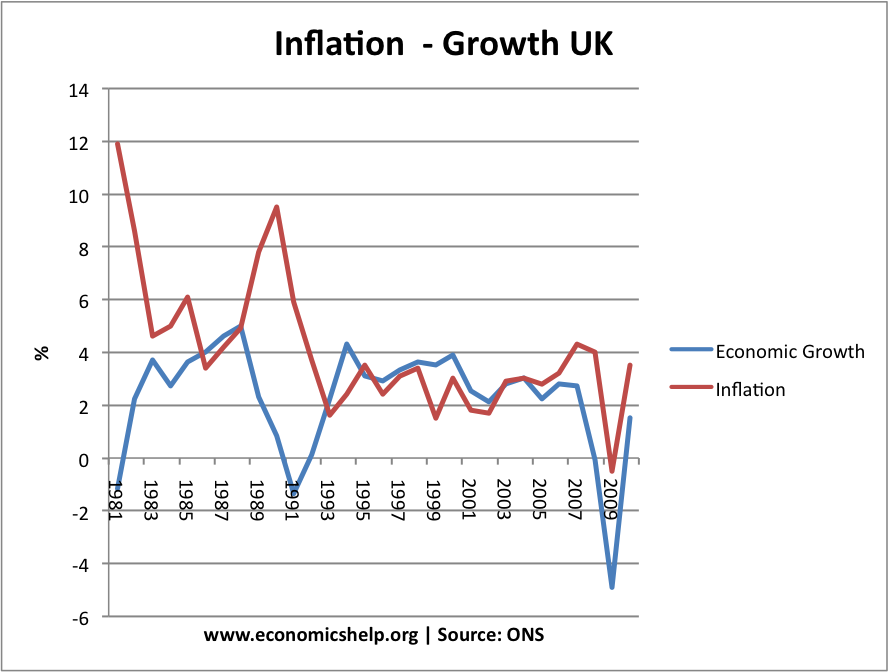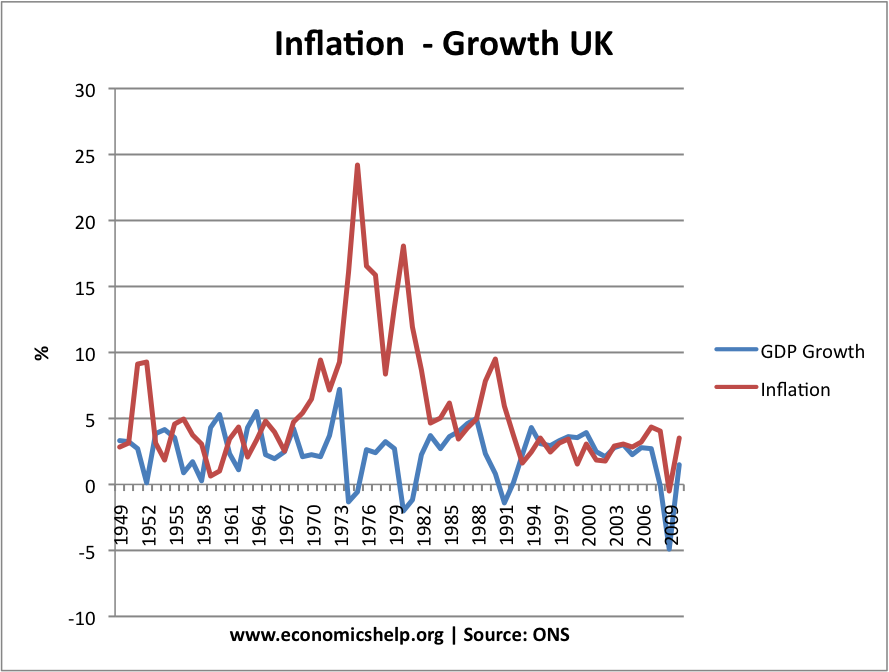Readers Question: how the unemployment and inflation is related to country’s economy
If we take the example of the UK, we can see differing examples of how unemployment and inflation are related to a country’s economy. The key to this question is what causes unemployment and inflation. There are several different factors, but it is important to consider both demand side and supply side factors.
Unemployment and Economic Growth. The most obvious factor is that higher economic growth will reduce unemployment. Since 1992, the UK has experienced a long period of economic growth, causing a fall in demand deficient unemployment. Unemployment in 2007 was just under 1 million. In 2008, the unemployment rate has continued to fall; it is about 4% of the labour force (depending on which method you use.) However, in the recession of 1981 (negative growth) unemployment rose to 3 million. Unemployment also rose to 3 million in 1992.
UK Unemployment v Inflation 1981 – 2010
 % annual change in growth and inflation.
% annual change in growth and inflation.
Unemployment and supply side factors. However, economic growth isn’t the only factor that determines unemployment. Unemployment is also caused by supply side factors such as structural unemployment, frictional unemployment and real wage unemployment. For example in 1989, at the height of the Lawson boom, unemployment was 600,000 higher than it is now. Arguably recent years have seen a fall in supply side unemployment. – A fall in the natural rate. E.g. better education and training e.t.c
Economic Growth and Inflation. In periods of high economic growth we often see a rise in inflation. This is especially true when economic growth is above the long run trend rate. When AD increases faster than AS, then inflation is likely to occur. For example, in the Lawson Boom of the late 1980s inflation increased from 3% to 10%
- However, economic growth doesn’t always cause inflation. In the late 1990s and early 2000s we have witnessed a long period of growth without causing inflation. This is because the growth has been sustainable. Growth rates have rarely been above 2.75% (which is the UK’s long run trend rate). Therefore, inflation has stayed close to the government’s target of 2%.
It is also worth bearing in mind that in recent years many supply side factors have helped keep inflation down. e.g. improved technology and lower raw material prices.
Unemployment v Inflation 1949-2010
 % annual change in growth and inflation
% annual change in growth and inflation
Related
- Sticky Inflation – higher inflation lower growth
- Measuring unemployment in UK
- Causes of Inflation
